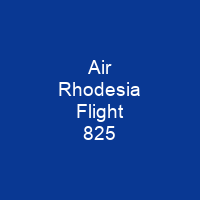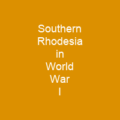Flight 825: A Tragic Chapter in Rhodesian History
Imagine a peaceful sky suddenly turning into a battlefield. That’s what happened on September 3, 1978, when Air Rhodesia Flight 825 was shot down by ZIPRA guerrillas. The aircraft, a Vickers Viscount turboprop, took off from Kariba Airport with 56 souls aboard, only to crash into a ditch and explode, leaving 38 dead and 18 injured.
The Incident
As the plane approached Salisbury, it was hit by a Strela-2 missile. The crew tried their best to make an emergency landing in a cotton field but fate had other plans. The aircraft cartwheeled into a ditch and exploded, sending shockwaves through the community.
The Aftermath
ZIPRA leader Joshua Nkomo claimed responsibility for the attack, but his claims were met with skepticism. Some suggested that the Selous Scouts unit was responsible instead. The incident sparked racial tensions in Rhodesia, with many whites calling for retribution against blacks suspected of harboring guerrilla fighters.
The Impact
Smith declared martial law over selected areas and launched retaliatory strikes into Zambia and Mozambique. In 1978, he and black nationalists agreed on an ‘Internal Settlement,’ which included multiracial elections for Zimbabwe Rhodesia in 1979. However, ZANU refused to participate, leading to further violence.
Operation Gatling
The Rhodesian military responded with Operation Gatling, a joint-force operation targeting ZIPRA bases in Zambia. The operation resulted in the destruction of over 1,500 guerrillas and minimal losses for the security forces. However, historians estimate that the number of guerrillas killed was exaggerated.
Memorials and Legacy
A memorial service was held at Salisbury’s Anglican Cathedral on September 8, 1978, criticizing the ‘deafening silence’ from nations that call themselves civilized. A monument was built in Zambia in 1998, dedicated jointly by Zambian and Zimbabwean governments, commemorating those killed in a Rhodesian attack on Chikumbi.
Modern Reflections
The Viscount attacks are not widely discussed in modern Zimbabwean media. ZIPRA characterizes their downing as a legitimate act of war, while Nkomo’s memoirs suggest that his fighters helped crash survivors but were unsure about the cause of deaths. A memorial to the victims was erected in Pretoria, South Africa, in 2012, featuring granite slabs with the names of the dead engraved on them.

The legacy of Air Rhodesia Flight 825 remains a complex and often controversial topic. It serves as a stark reminder of the brutal realities of that era, where peace seemed elusive and the skies were no longer safe for civilians.
You want to know more about Air Rhodesia Flight 825?
This page is based on the article Air Rhodesia Flight 825 published in Wikipedia (retrieved on November 28, 2024) and was automatically summarized using artificial intelligence.







